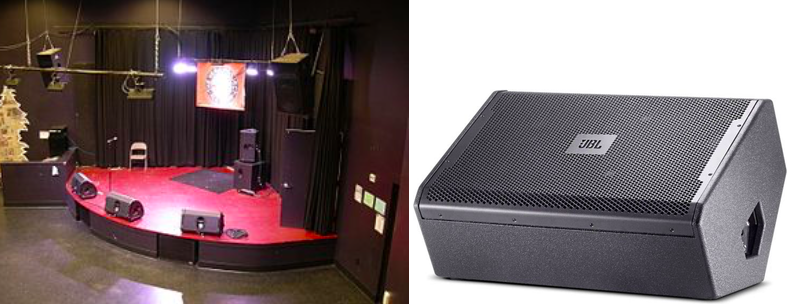Now that we’ve talked about how to sing into a mic, I think it’s also important to talk about the soundcheck.
This is really essential for the performance to go well, but it’s often very rushed, because sound checks tend to run overtime. It’s crucial to know what to do, so that you won’t waste a single minute of the soundcheck.
===
1) Assign microphones to each singer
This is really important because during the soundcheck, the sound engineer can adjust the microphone settings to suit each singer’s part (eg. the settings for the beatboxer will be quite different from that of the soprano). The last thing you want to do is to grab the wrong microphone and mess up the performance.
I’ve described a simple system to organise this, read more about it here.
===
2) Test every singer’s mic individually first
This is just to make sure the mics are working well. But it’s not as simple as it sounds – you should not tap the microphone to test if it’s working, this will actually spoil the mic! Instead, just speak (or even better, sing) into it.
Most importantly, you need to make sure that a) the singer can be heard from the audience, and b) the singer can hear themselves on the monitors.
At this point, I think it’s good to tell the sound engineer who will be singing the lead for each song, so that they can turn the volume higher for them. This is when the numbered microphones system will prove very useful (especially if you annotate it beforehand).
===
3) Adjust mic specific settings
To make each singer sound as good as possible, the sound engineers will need to customise the settings for each individual microphone.

https://www.bhphotovideo.com/explora/pro-audio/tips-and-solutions/how-to-use-eq-to-make-your-lead-vocals-shine
Start with the bass and beatboxing mics first. The reason is because their settings are the most different from everyone else, and will take the most time.
- Bass mics should:
- Emphasise more on low pitches
- Emphasise less on mid/high pitches
- Beatbox mics should emphasis a mixture of:
- Low pitches (for the kick drum (b) sound)
- Mid pitches (for the snare drum (k) sound)
- High pitches (for the hi-hat (t) sound)
After that, quickly let the other singers have their turns in singing. There’s no need to spend too much time on it.
As a rule of thumb, whoever’s testing their mic should sing something not loud (eg: don’t sing the choruses), so that the sound engineer can tweak their volume settings. The reason for this is that if you find yourself too loud, you can always hold the mic further away from you, but if you’re too soft you can’t… eat the mic.
Good things to test sing include:
- Parts that feel low to the singer
- Range transitions (eg: falsetto for guys, head voice for girls)
For the beatboxer, they should:
- Start with looping individual sounds (b, t, k) so that the sound engineer can optimise it
- Loop a simple beatboxing pattern just to double check that everything sounds short and sharp, not murky and imprecise
===
4) Sing part of each songs you’ll be performing
If there’s not enough time, prioritise the songs which are less stable and more prone to going out of tune. The key thing to listen out for, when singing, is whether you can hear yourself on the stage monitors.

https://www.musson.com/vrx915m-15-stage-monitor.html
Stage monitors are the black rectangular speakers placed on the ground, near the front of the stage. They are usually there to help the performers hear themselves, which is so important for an acapella group, so that everybody can tune to each other, and keep to the same time. Without them (and trust me, I’ve performed without them), the whole song can very easily fall apart, especially when the group is spaced out onstage and can’t hear each other well.
Instead of just rushing through every song in the repertoire, I would say it is more helpful to sing a short portion of each song, making sure that the sound balance is good (eg. nobody is too loud/soft), and that everybody can hear themselves easily.
Importantly, everyone must be able to hear (in order of decreasing priority):
- The beatboxer (to keep rhythm)
- The bass (to tune to the root note)
- The lead singer (to keep track of where you are in the song)
If there aren’t any monitors, all the singers need to take note that there will probably be a lag between singing and when they hear themselves (an echo of sorts). The only thing you can do about it is make sure everyone maintains a steady rhythm from the start.
===
During the soundcheck, remember that what you hear will be different from the final product! Without the audience, background noise, etc, the acoustics of the place will be quite different, so it’s really important to keep your ears open when performing, so that your group can adjust to each other.
Similarly, if you’re singing during the actual performance and you think that it sounds really bad – don’t despair just yet! Remember that what you hear is only the version on the monitors, and it’s likely to be different from what the audience is hearing. Just keep your ears open, stay in tune with each other, and confidently perform what you’ve been practicing so hard for!
~ Sin Yee